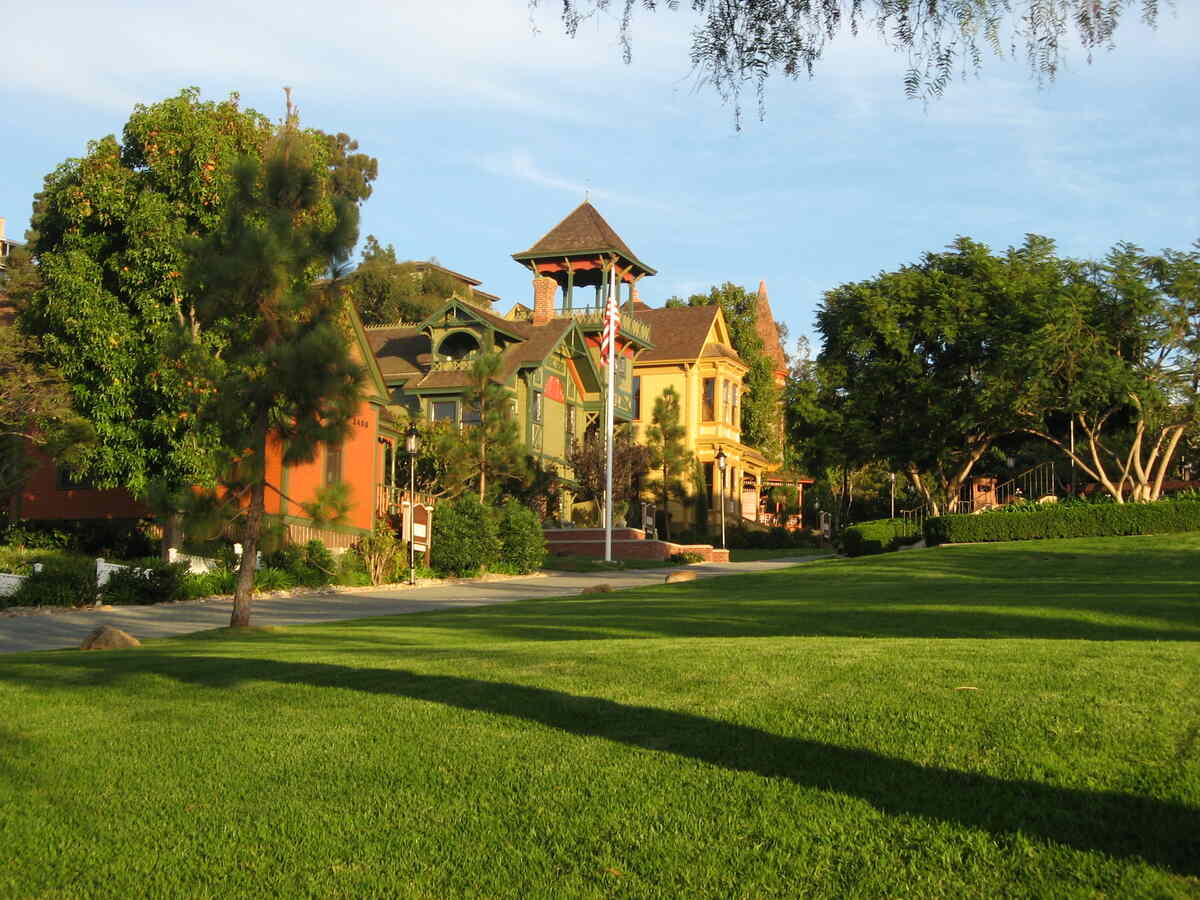
Known for its stunning beaches, world-famous attractions, and delightful climate, San Diego is the envy of many. The arrival of spring is the perfect time for homeowners to start focusing on their outdoor spaces. In this article, we’ll explore 10 essential spring lawn care tips for San Diego to help transform your yard into an oasis of greenery.
From implementing effective fertilization methods to mastering efficient watering and mowing practices, our lawn care tips for San Diego will help you create a stunning outdoor space while remaining environmentally conscious.
1. Rake Leaves
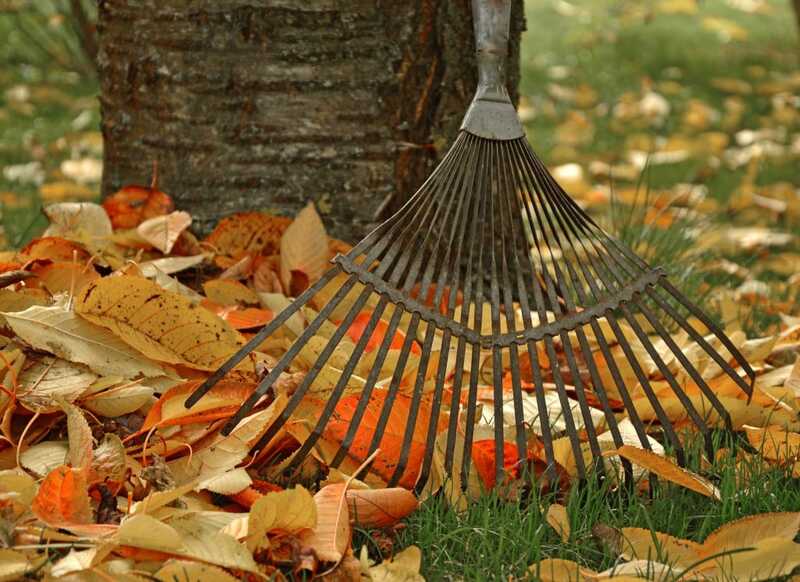
While raking leaves is often associated with the crisp autumn season, it’s important not to overlook this task in the spring. As the winter chill recedes, you may find fallen leaves, debris, and lifeless grass blades scattered across your lawn.
Although it may be tempting to leave the leaves there, neglecting to remove them can harm your lawn. They can contribute to thatch buildup, forming moldy clumps that suffocate and smother new growth.
Pro Tip: You can also improve your lawn by mulching leaves and grass clippings. By making a few passes with your lawn mower over the dry leaves, you can create a thin layer of mulch that will help add nutrients back into your lawn.
2. Decode the Soil’s Secrets
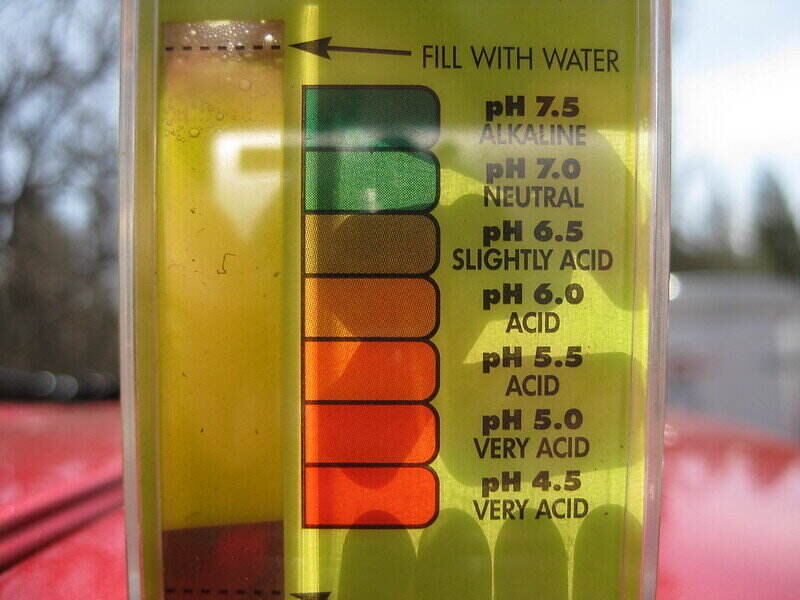
Testing the soil is a crucial step in understanding the unique needs of your lawn. By conducting a soil test, you can determine the specific nutrients your soil may lack, allowing you to provide targeted nourishment with soil amendments.
In San Diego, the soil tends to be clay-like and alkaline, presenting its own set of challenges. While clay soil is generally effective in retaining water and nutrients, it also holds onto sea salt, which can alter the soil’s pH. This change in pH can affect nutrient uptake, making monitoring your soil’s composition even more critical.
You can amend your soil with:
- Composted manure
- Compost
- Leaf litter
- Bark
- Gypsum
- Elemental sulfur
- Aluminum sulfate
Applying amendments like compost in early spring can help establish a well-rooted plant and allows time for the fertilizer application later.
3. Quench Your Lawn’s Thirst
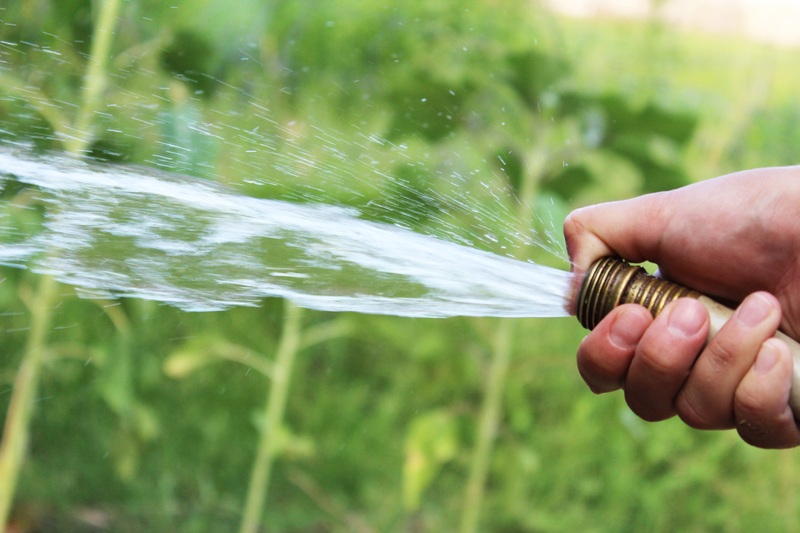
Watering your lawn during spring in San Diego requires a thoughtful approach, taking into account the type of soil you have, the type of grass, and the state’s guidelines on water usage.
Sandy soils benefit from more frequent, lighter watering to maintain adequate moisture levels. In contrast, clay soils, common in the area, need deep and infrequent watering to reduce runoff and ensure root growth. You can try the cycle and soak method below:
- Divide the total watering time into multiple shorter cycles, like 2 cycles of 6 minutes each or 3 cycles of 4 minutes each, with an hour between each cycle.
- The first cycle breaks the soil’s surface tension and saturates the top layer.
- In the second cycle, the water seeps through deeper soil layers.
- The following cycles can be helpful for areas with slopes or significant runoff.
In addition, drought-tolerant grass types, like Bermudagrass, St. Augustinegrass, and tall fescue, are ideal for San Diego lawns, as they require less water to maintain their lush appearance.
4. Trim the Green Carpet
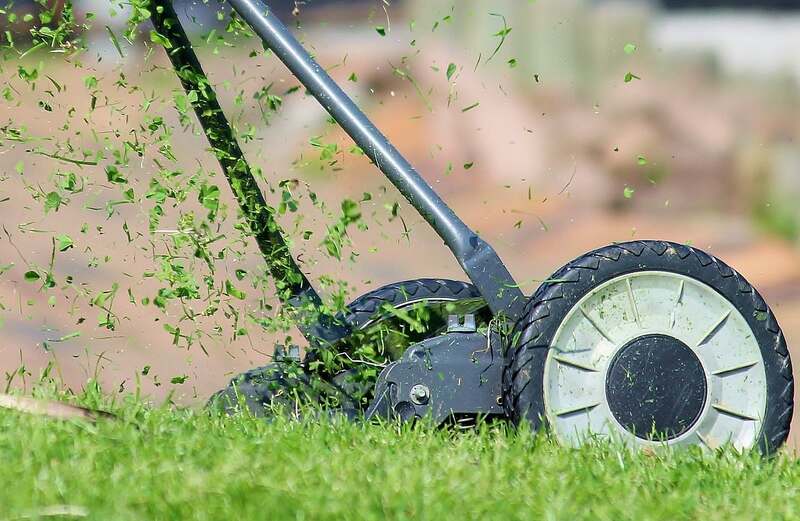
Mowing the lawn is essential to maintaining a healthy and beautiful yard. The optimal mowing height and frequency will depend on your grass type, as each variety has its own specific needs. Here’s the suggested mowing height for the best grass types in San Diego:
| Grass Type | Mowing Height (inches) |
| Bermuda | 1 – 1.5 |
| St. Augustine | 1 – 2 |
| Zoysia | 0.5 – 1 |
| Tall Fescue | 1.5 – 3 |
More tips on how and when to mow your lawn during spring:
- Follow the rule of one-third: Never remove more than one-third of the grass blade’s length at a time.
- Wait until the grass is at least 2 inches tall.
- Mow after the temperatures are consistently above 40 degrees.
- Sharpen your mower blades.
- Don’t mow wet grass.
- Alter your mowing pattern each week.
5. Nourish Your Lawn
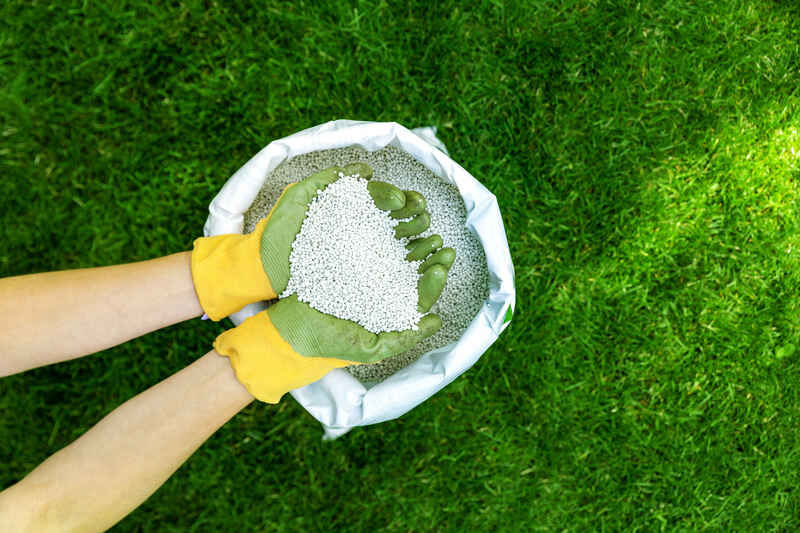
Spring is the perfect time to start thinking about fertilizing your lawn in San Diego. A soil test will tell you what nutrients your grass needs the most, and this information is critical for choosing the right fertilizer.
The best time to fertilize warm-season grasses like Bermuda, St. Augustine, or Zoysia is mid-spring through summer after the lawn has greened up. This timing ensures that the grass will have the necessary nutrients to thrive during the warm months.
However, the best time to fertilize is in fall if you have cool-season grasses like tall fescue. The second best time is in early spring after the lawn has greened up to promote healthy growth.
Tip: Remember to follow the application instructions carefully, as over-fertilization can harm your lawn and the environment.
6. Tame the Unwanted Guests
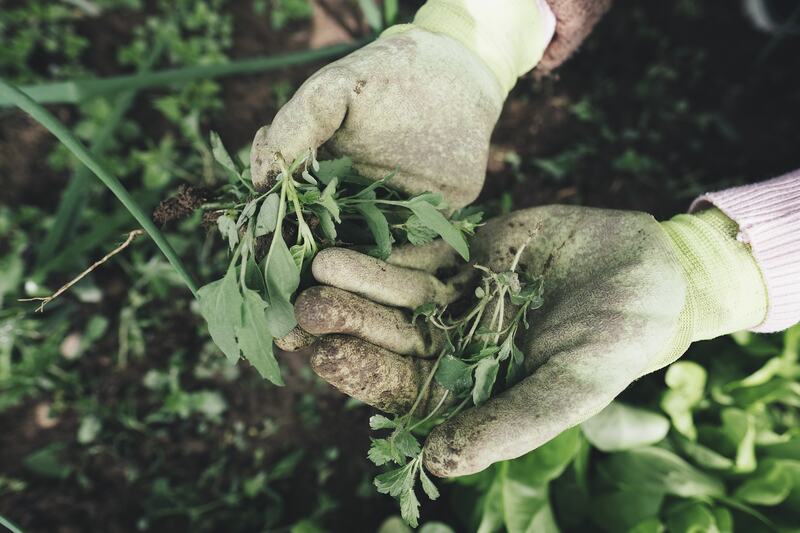
Preventing summer weeds during spring in San Diego is an essential task for homeowners. The best approach to weed control is to apply pre-emergent herbicides in spring when the soil temperature is between 50 to 55 degrees. This will help interrupt weed seeds’ growth process, minimizing their appearance during the summer months.
If you spot any weeds that have already emerged, you can use a spot treatment with post-emergent herbicides or pull them out by hand. It’s important to address any weeds immediately to prevent them from spreading and potentially overtaking your lawn or garden.
Common lawn weeds in San Diego include:
- Crabgrass
- Dandelions
- Purslane
- Spotted spurge
- Clovers*
*If you’re constantly battling clovers in your lawn, it might be time to consider giving up the fight and embracing a clover lawn instead. They are particularly well-suited for areas with low rainfall, such as San Diego. See our article: “Can a Clover Lawn Grow in Southern California?“
7. Remove Thatch
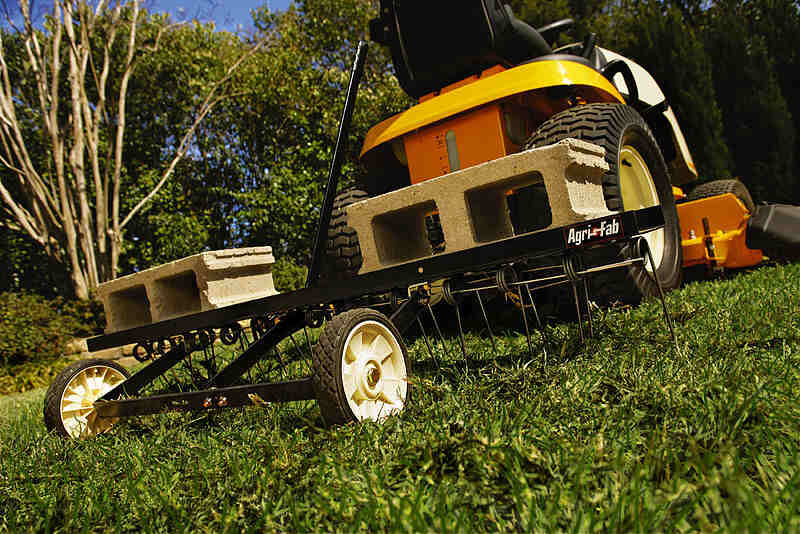
Thatch is a layer of organic matter made of primarily dead grass accumulating over time. If this layer is more than 1/2 inch thick, it can prevent air and water from getting to your lawn, leading to problems like root damage and fungal diseases.
Knowing when to dethatch your lawn is essential to maintain a healthy lawn in San Diego, especially in the springtime. Late summer or early fall is the best time to dethatch for cool-season grasses, while warm-season grasses should be dethatched in late spring or summer.
Note: Tall fescue, a common grass type in San Diego, doesn’t usually produce significant thatch buildup, so you may be able to skip this step if this is your grass type.
8. Thicken Up Your Lawn
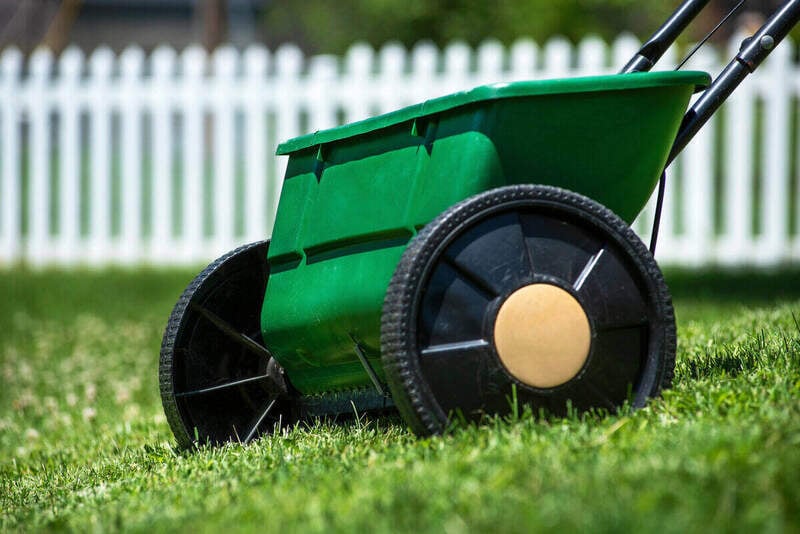
Suppose you want to keep your beautiful lawn looking lush and vibrant all year round in San Diego. In that case, overseeding can be an effective solution. Overseeding involves spreading grass seeds over your existing lawn to encourage more grass to grow.
Adding new grass seed to your lawn can fill bare patches, thicken thinning areas, and promote a more even, uniform look. However, as with any lawn care technique, timing is essential. Warm-season grasses, like Bermuda and St. Augustine, should be overseeded in the spring or early summer. In contrast, cool-season grasses like tall fescue should be overseeded in fall.
Warning: During spring, you must decide whether to prioritize weed control or to overseed your lawn. If you opt for herbicides to prevent weed growth, it will also impede the germination of new grass.
9. Let the Lawn Breathe
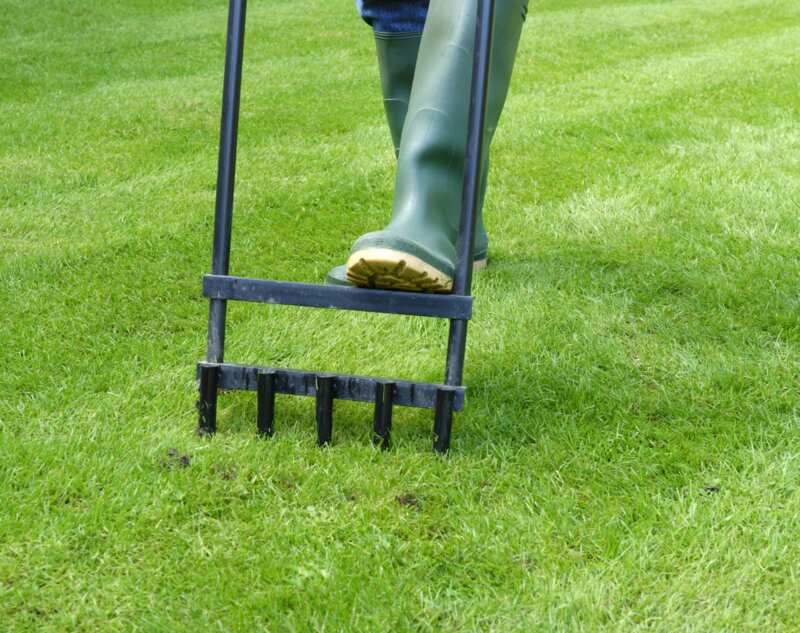
Lawn aeration is the process of pulling cores from the soil to allow air, water, and nutrients to penetrate the root zone, promoting healthy grass growth.
Warm-season grasses like Bermuda and St. Augustine should be aerated during late spring or early summer, while cool-season grasses such as tall fescue should be aerated in early spring or early fall.
Pro Tip: After aeration is an ideal time for overseeding your lawn. The holes in the soil allow for better seed-to-soil contact, promoting successful germination and growth of new grass.
10. Defend Your Turf Against Pests
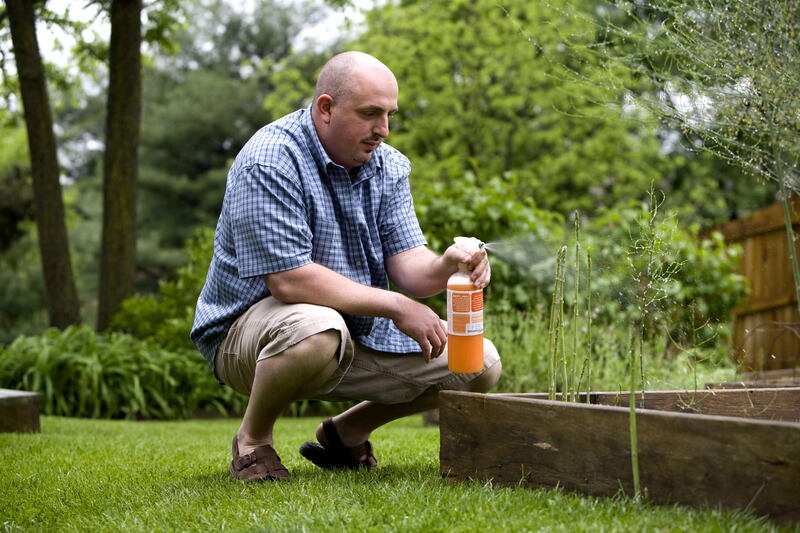
Defending your turf against pests is crucial to maintaining a healthy and vibrant lawn. Unfortunately, with abundant food and shelter available during spring, many pests can quickly invade your lawn and cause significant damage.
In addition, it’s vital to deal with these pests in the spring before they mature during the summer months, making them more challenging to get rid of. Common pests in Southern California include:
- Argentine ants
- White grubs
- Cutworms
- Armyworms
- Sod webworms
- Aphids
You have two main options for dealing with these pests: traditional pesticides or organic pest control. Traditional pesticides can be effective, but they often contain harsh chemicals that can harm beneficial insects, pets, and people.
On the other hand, organic pest control uses natural methods to control pests, such as introducing beneficial insects or chemicals that already exist in nature, such as sulfur or Bt.
FAQ About Spring Lawn Care Tips
In sum, if you’re living in San Diego, CA, there are several things you should consider doing to your lawn in early spring to promote healthy growth throughout the year. Here are the primary tasks:
● Rake leaves
● Test and amend your soil
● Water
● Mow
● Control weeds
● Aerate (for cool-season grasses)
● Control pests
Mid-morning is generally the optimal time to mow your lawn. If you mow your grass when it’s still wet with dew in the early morning, you risk damaging it. On the other hand, mowing your lawn during the early afternoon can expose it to high temperatures, which can burn the grass and cause it to turn brown.
By mowing your lawn mid-morning, you can give your grass the benefit of the day to dry and heal while avoiding the potential risks of mowing during other times of the day.
Preparing for summer lawn care in San Diego is crucial as the season typically means less rainfall, making it challenging to keep your lawn healthy and looking its best. To prepare your lawn for the summer, there are several steps you can take during spring:
● Upgrade your watering system to ensure your lawn is receiving adequate moisture.
● Apply a layer of mulch, using grass clippings to retain moisture.
● Feed your lawn with a slow-release fertilizer to provide it with the nutrients it needs to stay healthy and strong for summer.
● Apply a pre-emergent herbicide to prevent weed growth, which is common during the summer in San Diego.
Bring in the Pros
Taking care of your lawn during the spring season in San Diego can be a lot of work, with many details to keep in mind. However, this doesn’t mean that you should let the task of lawn care overwhelm you. If you’re unsure how to properly care for your lawn, consider hiring a San Diego lawn care pro to handle your spring lawn care while you go out and enjoy the beautiful days of spring.
Main Image Credit: Ken Lund / Flickr / CC BY-SA 2.0